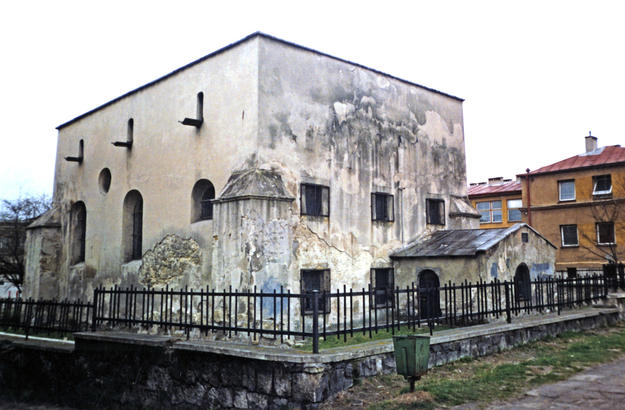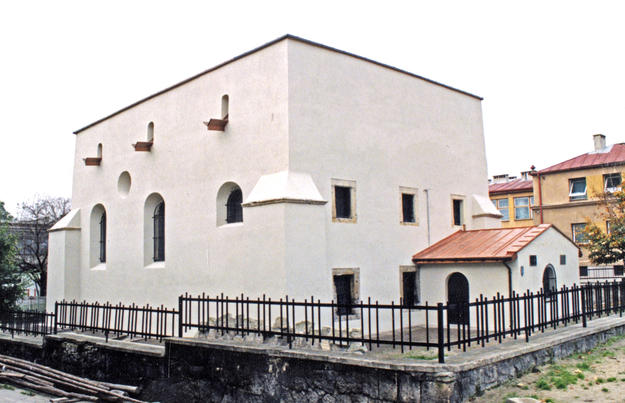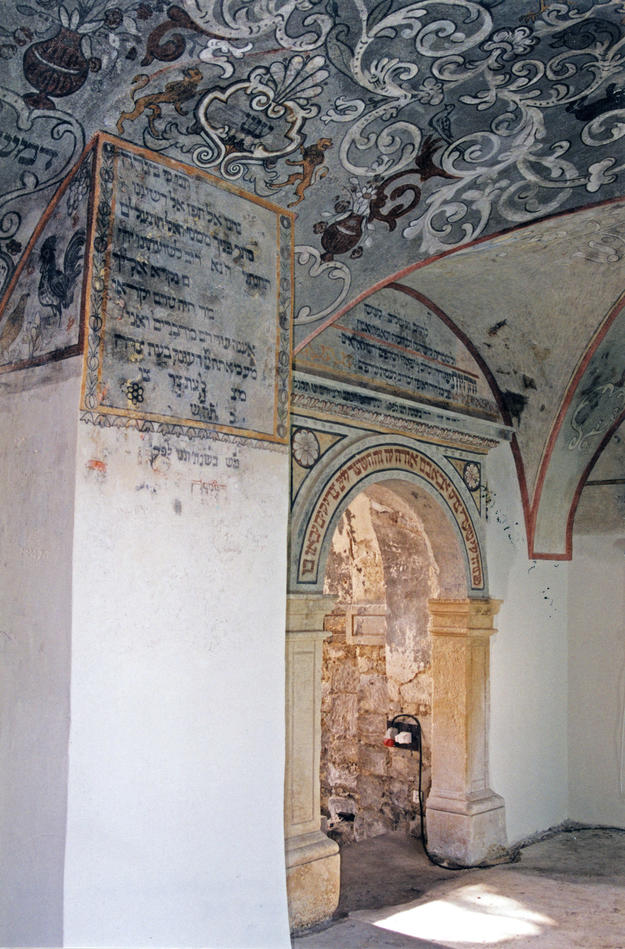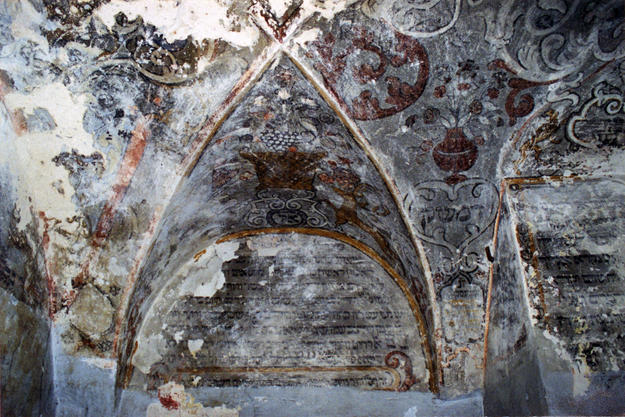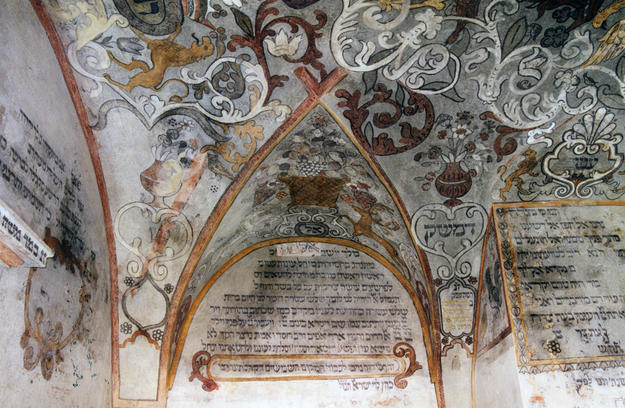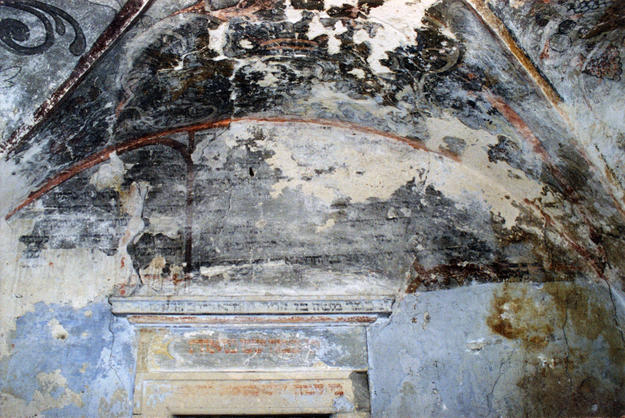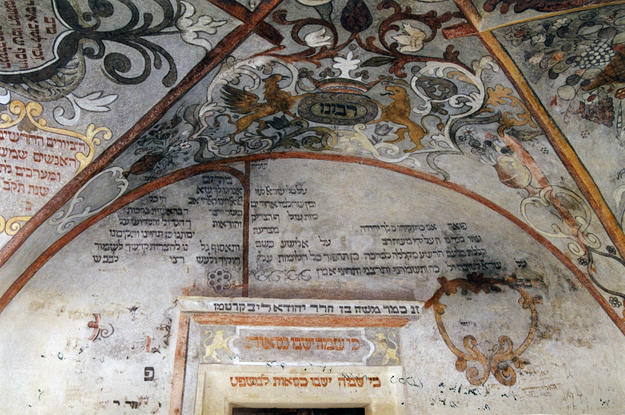Pińczów Synagogue
Built at the turn of the seventeenth century, Pińczów Synagogue is the last surviving Jewish monument in the city of Pińczów, a thriving center of ethnic and religious diversity for centuries. The synagogue is unusual both for its age as well as its adaptation of a Renaissance architectural style, splendid paintings, and fine stone carvings. Large sections of polychromic patterning, attributed to the painter Jehuda Leib, hang in the synagogue’s main prayer hall and porch. Interior murals, some of which date from the 1600s, are the oldest synagogue fresco paintings in Poland. The town of Pińczów was largely destroyed by German troops in the fall of 1939. The vast majority of the town’s Jewish population was later killed, many sent to Auschwitz, and much of the community’s cultural heritage destroyed. The synagogue was vandalized by Nazi occupation troops, and further damaged in fighting during the final year of the war.
Our conservation efforts highlight the artistic and cultural triumphs of Pińczów’s Jewish community
The years of neglect and defacement were evident when we began work at Pińczów in 2005. Conservation efforts focused on the women’s gallery and the kahal room, used for meetings of elders, which house some of the synagogue’s finest wall paintings and had suffered from years of deterioration. A team of conservationists worked to desalinize and restore paintings, remove and replace crumbling plaster sections and joints, and clean exposed walls. The team also replaced damaged window frames and stone elements, and repaired several of the building’s walls. Some of the inscriptions and scrolls found there offer valuable new research material for academics studying Jewish history in Poland.
Our conservation efforts at Pińczów Synagogue highlight the artistic and cultural triumphs of the Jewish community from the sixteenth to the early twentieth century and also acknowledge the neglect of the site due to the loss of the Jewish community during and in the aftermath of World War II. The work also recognizes the significance of the site to a global audience, as both a historical and artistic monument; efforts to preserve the synagogue’s wall paintings and interior decorations ensure the site endures, even as the Jewish community that once surrounded it has largely disappeared.

